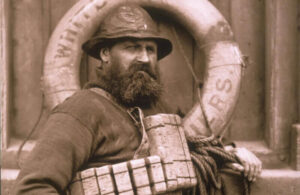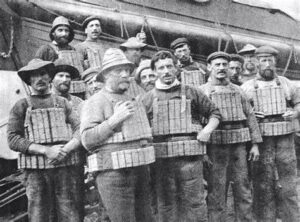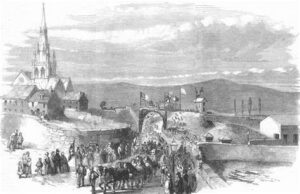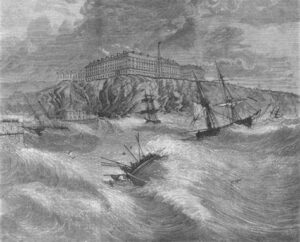
 Like most safety equipment, people did not see the need for lifejackets until tragedy struck…at least not most people anyway. These days, we know that a personal flotation device (PFD…also referred to as a life jacket, life preserver, life belt, Mae West, life vest, life saver, cork jacket, buoyancy aid or flotation suit) is a flotation device in the form of a vest or suit that is worn by a user to prevent the wearer from drowning in a body of water. Most people know how important they are, but that doesn’t necessarily mean that most people use them. PFDs are known for keeping the wearer afloat with their head and mouth above the surface if they find themselves in the water due to a boating accident, or even a plane crash into water. People don’t have to know how to swim or tread water in order to stay afloat, and they can even be unconscious.
Like most safety equipment, people did not see the need for lifejackets until tragedy struck…at least not most people anyway. These days, we know that a personal flotation device (PFD…also referred to as a life jacket, life preserver, life belt, Mae West, life vest, life saver, cork jacket, buoyancy aid or flotation suit) is a flotation device in the form of a vest or suit that is worn by a user to prevent the wearer from drowning in a body of water. Most people know how important they are, but that doesn’t necessarily mean that most people use them. PFDs are known for keeping the wearer afloat with their head and mouth above the surface if they find themselves in the water due to a boating accident, or even a plane crash into water. People don’t have to know how to swim or tread water in order to stay afloat, and they can even be unconscious.
People have known for centuries that they needed such a device to ensure their safety when they are crossing deep streams and rivers. They created flotation devices out of inflated bladders, animal skins, or hollow sealed gourds to make for safer crossings. It is believed that Norwegian seamen created these first devices using blocks of wood or cork. Still not everyone paid attention to those who said they were important. The first known invention of a lifejacket came in 1854, when the Royal National Lifeboat Institution (RNLI) Inspector,  Captain Ward, broke new ground in lifesaving with his new design of cork lifejacket. During the 19th century, RNLI volunteers had to manually row their boats when launching to rescue in stormy seas. When the first lifejacket design was created, it therefore needed to be flexible enough to move with the men as they paddled.
Captain Ward, broke new ground in lifesaving with his new design of cork lifejacket. During the 19th century, RNLI volunteers had to manually row their boats when launching to rescue in stormy seas. When the first lifejacket design was created, it therefore needed to be flexible enough to move with the men as they paddled.
RNLI lifeboatman, Henry Freeman, worked in Whitby, Yorkshire, England. Freeman was a big proponent of the latest safety item, the cork lifejacket. He tried to get the other lifeboatmen to wear cork lifejackets, but they did not see the need, nor did they think the new cork lifejackets were such a great invention. Nevertheless, Freeman was so sure that he never went on a rescue without one. The on February 9, 1961, off the shores of Whitby, a huge storm developed. By 8:30am, the lifeboat crew had launched their first rescue, successfully saving the crew of the John and Ann. A short time later, they were called out again to assist a schooner, Gamma, who had run aground. After their second successful rescue, the crew celebrated with a glass of grog at the station. As the storm grew worse, and after several more rescues, Harbormaster Mr Tose and Coxswain John Storr decided that if more vessels came in, they simply could not respond. The lifeboat would be of little use at a high tide in such a storm. A short time later, the Flora and the Merchant were spotted in trouble. The Flora successfully made it into the harbor, but the Merchant ran ashore.
Although the Whitby crew had agreed not to respond, they just couldn’t stand by and watch the Merchant sink. As they maneuvered towards the stricken collier, the lifeboat was hit by a powerful wave that caught the stern of the lifeboat, capsizing it and throwing the crew overboard. The crowd onshore watched in horror as the crew 
 struggled in the raging sea. in the end, all of the lifeboat crew were lost, except for Henry Freeman, who survived due to the cork lifejacket he had insisted on wearing. Freeman was on his first call out. I’m sure that there were those in the crew who laughed at Freeman for wearing the lifejacket, thinking he was just being ridiculous, but as they were losing their lives, I’m sure they regretted their decision not to wear one too.
struggled in the raging sea. in the end, all of the lifeboat crew were lost, except for Henry Freeman, who survived due to the cork lifejacket he had insisted on wearing. Freeman was on his first call out. I’m sure that there were those in the crew who laughed at Freeman for wearing the lifejacket, thinking he was just being ridiculous, but as they were losing their lives, I’m sure they regretted their decision not to wear one too.


Leave a Reply